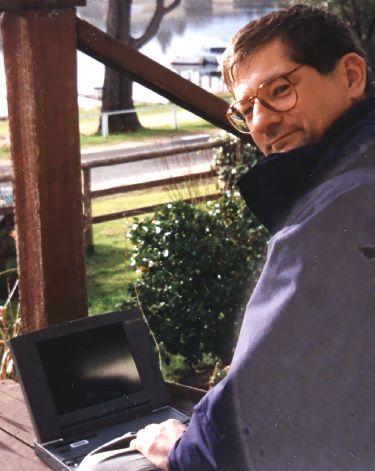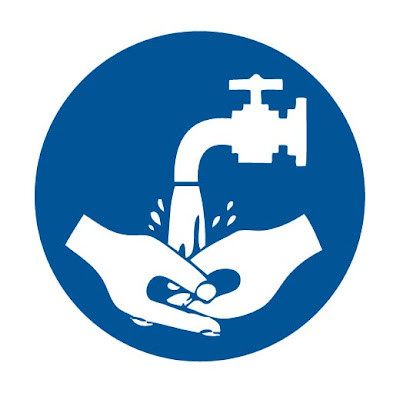Participation in government requires access to information, forums and decision making. Tom Worthington discusses how he has used web technology for governance of organisations and public administration. He shows new mobile technologies to revitalize participation and improve the resilience of communities. Examples of how the technology is being used to respond to emerging social and environmental challenges are provided.
- Simple steps to putting the government on a smart phone
- Examples of online governance and administration
- Dealing with Swine Flu and climate change via the web
Tom Worthington is an independent IT consultant and an Adjunct Senior Lecturer in the Faculty of Engineering and Information Technology at the Australian National University. He has been an expert witness in several court cases involving computer issues. After a career in IT policy with the federal government, he was elected a Fellow of the Australian Computer Society for his contribution to the development of public Internet policy in Australia.
Tom teaches the design of web sites, e-commerce and professional ethics at the ANU. He designed the Australian Computer Society's Green ICT Strategies course and is currently designing a ANU Masters course in sustainable computing strategies.
Tom is a past president, Fellow and Honorary Life Member of the Australian Computer Society, a voting member of the Association for Computing Machinery and a member of the Institute of Electrical and Electronics Engineers.
Exercise KANGAROO 95 took place in an area of over 4 million km square, across the Top End of Australia from July to the end of August 1995 and involved over 17,000 Australian Defence Force troops, and visiting units from the USA, Malaysia, Singapore, Papua New Guinea, the UK and Indonesia.
Reports and photographs were transmitted from the exercise area using stand-alone portable satellite communications terminals, capable of 64kbps.
As manager of the Defence home page, I received the reports at Defence headquarters in Canberra and up-loaded, them to a publicly accessible Internet server at the Australian Defence Force Academy.
During the exercise the Department of Administrative Services announced K'95 trucking tenders on its Government Electronic Marketplace Service (GEMS). GEMS was linked to the K'95 home page, demonstrating the synergy possible with the Internet.
"Commercial off the shelf" lap top computers and Internet software were used for transmitting the photos and reports. Photos were processed for efficient on-screen display, but also proved useful for printed reproduction.
For the first week of the exercise I was officially on holiday, but maintained the K95 home page remotely using a pocket 2400 pbs modem and lap top PC from Mallacoota, Victoria.
During the exercise the Department of Administrative Services announced K'95 trucking tenders on its Government Electronic Marketplace Service (GEMS). GEMS was linked to the K'95 home page, demonstrating the synergy possible with the Internet.
While the web reports were for public relations, many in the exercise find the reports more timely than those via the official internal Defence commutation systems. Later exercises, such as Tandem Thrust 97 made more use of the Internet for the operations.
By this time the Minister for Defence and several other ministers and government agencies had simple web pages.
The processing power and network bandwidth of the laptop and desktop computers used for exercise KANGAROO 95 in 1995 is comparable with what is available from 3G smart phones in 2009. However, the use of these devices is being held up by poor web design.
Web pages design in 1995 were text rich, with small images and limited layouts. These designs are compatible with today's smart phones. Later more complex web page designs lost this compatibility, due to their complex designs and increased file sizes.
Also web based services need to be designed as services, not as marketing brochures. CSS features supported in modern web browsers allow for web 2.0 features, but organisations need to accept that their staff and their clients will want to be involved in decision making. Effort therefore need to be put into clear, detailed, information rich web sites.
Thinking about interaction with Government via a mobile web device can help all web users. The limitations in screen size and keyboard access force the web designer to focus on how to communicate clearly, with the most important information first.
Some impediments to the use of the technology could be easily removed. As an example, in 2008 the Department of Finance and Deregulation issued a report on "Consulting with Government – online". This was a well reasoned exploration of the issues. However, the report was only issued as large, hard to read online PDF and RTF files, not as easy to read web pages.
The Online Consultation Guidelines from the Australian Government Information Management Office (AGIMO) are reasonably accessible and mobile friendly. The home page achieves a 80/100 score on the W3C mobileOK Checker. However, discussion of the document is still hampered by a Commonwealth Copyright Notice.
The Commonwealth Copyright notice used for web pages is essentially unchanged from the Department of Defence web copyright notice developed in 1995. The Australian Government should adopt the Australian Creative Commons Licence, or similar, to allow the free discussion of issues.
The Commonwealth Internet Reference Group (CIRG) was convened in late 1994 and worked with a corresponding Commonwealth/State Internet Reference Group and less formally with industry and academic bodies. The CIRG made use of electronic mailing lists.
The Internet challenged many of the myths of the bureaucratic culture. Government organisations are only partly run by the official rules. In the mid 1990's there was use of the Internet for formulating government Internet policy.
As the Internet and web came into wider use around 2000, this informal consensus ended and government reverted to less efficient and less accountable communication techniques.
GovDex provides an example of an online tool which is provided by the Department of Finance for collaboration across federal government agencies, other levels of government and the private sector. GovDex provides web based Wikis and Forums. However, the tool is under used due to the lack of training and support in how to formulate policy and govern online.
Tools such as GovDex can easily modified to be compatible with smart phones, with the addition of different CSS styles.
Dr Robert Fitzgerald of the University of Canberra recently returned from Cambodia, where he has been working on the use of mobile phones in aid projects. One system is developed by InSTEDD. This Short Message System (SMS) is used with Geochat mapping software for tracking a pandemic. This takes information sent in an SMS message and maps it with Google Maps. This has been used for an Avian Influenza simulation exercise
While SMS linked mapping software has obvious application in Australia with the current swine flu pandemic, low cost improvements first need to be made to the current government flu web pages.
There are obvious technical faults in the Australian Government's "Swine Flu Outbreak" web page. The PDF versions of information brochures could be replaced with easier to read web pages. Simple animations which demonstrate techniques such as hand washing could be created. These could be displayed on web pages and also be suitable for use on smart phones, iPods and on digital signage in schools, offices and workplaces.
The Australian Government home page provides a link for "Swine Flu Outbreak" , but unfortunately the link is to a web page with the vague title of "Heath Emergency". Many readers are likely to stop at this point, think they are in the wrong place. The web address for the page is generic, referring to "Heath Emergency", however there appears to be no provision for more than one health emergency or distinguishing between them. There is also no provision for government information on other forms of emergencies.
The information on the "Heath Emergency" page is not intended for the general public and is not suitable for them. The page is intended for health professionals, school administrators and business people. This is indicated by the menu on the page which lists information for individuals and households last in a menu of seven items. It is unlikely that many people will even notice this menu item. This should be changed to put the information for individuals on to of the home page.
The "Individuals and households" has a menu at the top which lists "Personal protective equipment" as he first item. However, this is not the most important way to combat flu, which is good personal hygiene, which is the first item below the menu. Many people will click on "Personal protective equipment" and thus miss the first section "Protecting yourself and others". That topic should be added as the first item on the menu.
The web page failed a TAW automated web accessibility test, TAW 3.0 (6/8/09 12:51 AM) Validation conform to WAI guidelines, W3C Recommendation 5 May: 1999. There was one Priority one problem, 12 priority two and 1 priority three problems. There is a ALT text tag missing from one image on the page, which should be added. It would also be useful to offer audio and video versions of the information and in other languages.
The page scored 79/100 with the W3C mobileOK Checker, which is a good result.
The page is 53KB, with 34KB for the images. The text of the page is 16 kbytes, indicating that there is not an excessive amount of formatting used. However, the page might usefully be split into two smaller pages. The image providing advice on hand washing is relevant and useful but should be optimized for online use. Consideration could be given to reducing the complexity of the images, making them simple pictograms.
Australian National University COMP2410 students undertook a web design assignment on a swine flu advice web site for Australia. That expertise is now available to the community, if needed.
The Australian National University won the 2009 Impact Award from the International Sustainable Campus Network (ISCN) in Switzerland. The award is for a sustainable campus with the integrated application of the principles of energy efficiency and environmental sensitivity.
ANU will commence a "blended" Masters course in Green ICT Sustainability from July 2009. The course combines the use of an Australia developed web based e-learning system with optional on campus seminars. Students have the choice of completing the whole course remotely via the Internet, or attending the campus. As a result the course not only teaches how to reduce greenhouse gas emissions using ICT, it is an example of doing it.
The ANU uses the Australian developed Moodle open source Learning Management System. This is used to provide forums for students to discuss what they are learning, not just receive content prepared by teachers. This also teaches students how to use the same online collaboration techniques in the workplace. The techniques of using mentored collaborative online learning for computer professional education were developed for the ACS by David Lindley. These same techniques can be applied to government policy formation online.






